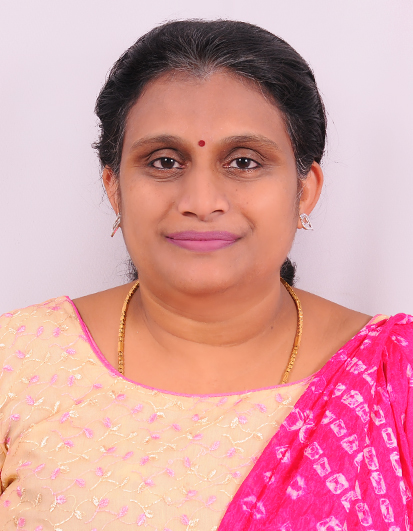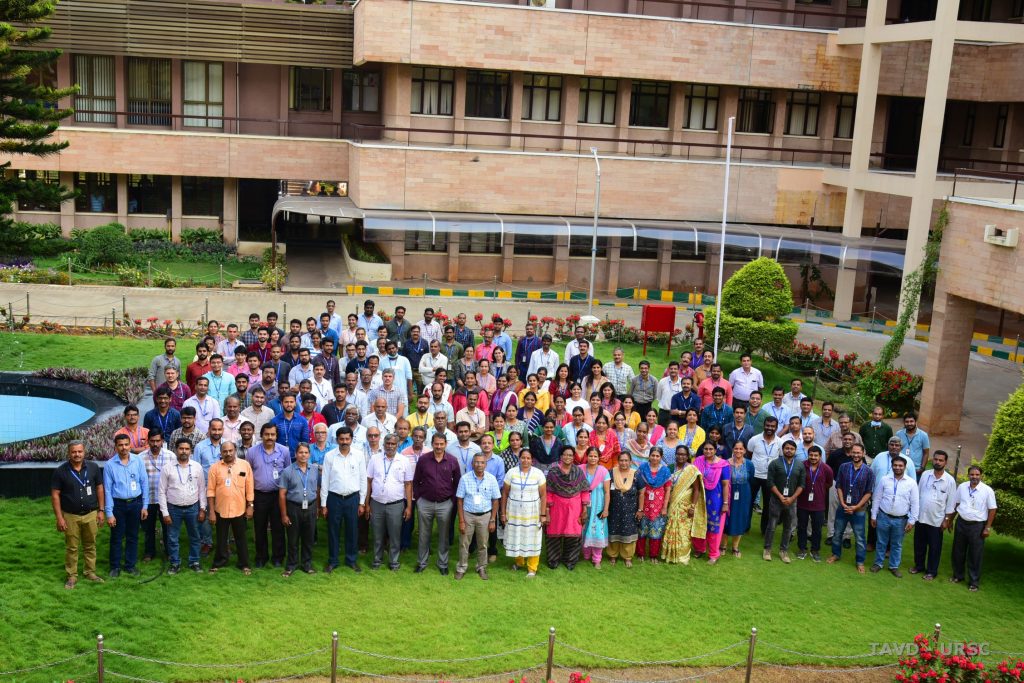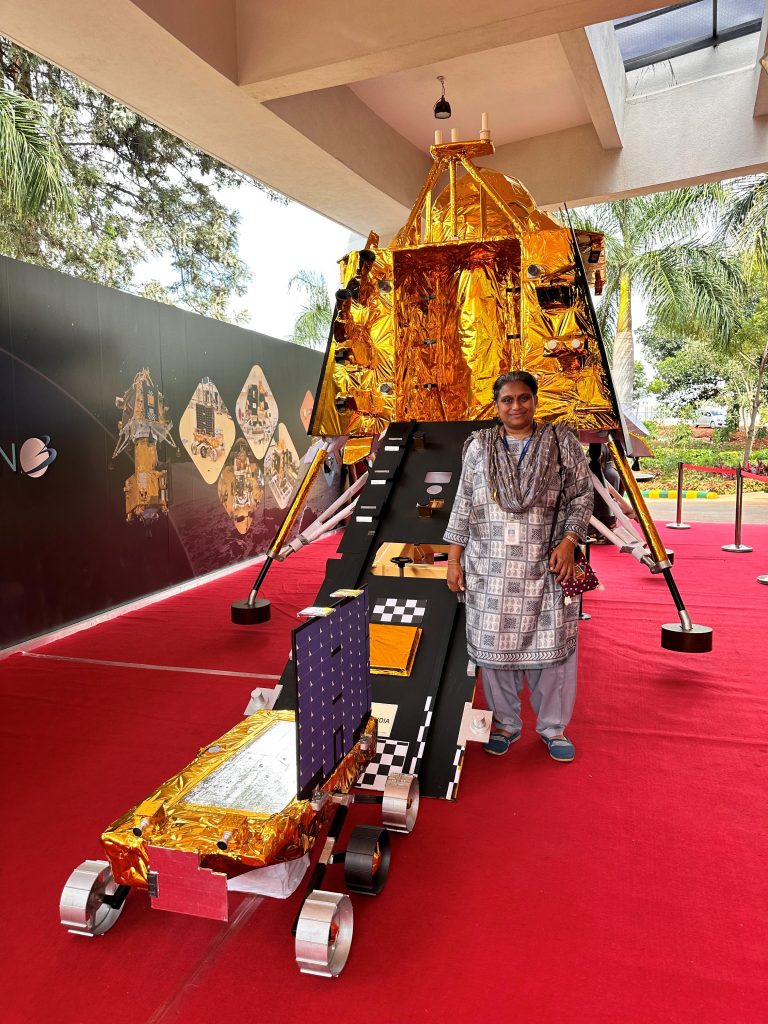How we built sensors for Chandrayaan-3 to navigate and land on the Moon
By Maranganti Sreedevi, AGMP-06
Chandrayaan-3 was one of the high points in my two and half decades of service at ISRO. I’m excited to talk about my team’s contribution, experiences, challenges and achievements culminating in Chandrayaan-3’s success. I am a Senior Scientist in Laboratory for Electro-Optic systems (LEOS), Bangalore and currently am Deputy Project Director for many missions of national importance like the IRNSS (Indian GPS), INSAT-3DS (weather monitoring) and scientific missions like XPOSAT. It has been my privilege to directly contribute for missions like the Chandrayaan-1/2/3, Astrosat, Cartosat series, RISAT series, Mars Orbiter, and Aditya-L1 providing mission critical star sensors.
About LEOS
LEOS is the lead centre of ISRO for realizing sensors used for attitude control of the satellite, extremely high-precision camera optics of varied sizes, microelectronic mechanical systems and laser-based instruments, scientific payload– instruments to study physical, chemical and environmental properties in space and cameras for navigation. In fact, it may be the only unit in the country which specializes in these domains realising instruments with such challenging specifications. Each system built here is a masterpiece and a culmination of technical skills, effective communication, collaboration and a combined team vision. LEOS has successfully delivered a suite of essential and critical attitude sensors, range and velocity sensors, slope sensors, optical navigation cameras, optics and optical assemblies and scientific payloads suiting the diverse mission requirements of Chandrayaan-3.
Attitude provides information about an object’s orientation in space with respect to a chosen reference frame. Attitude control sensors of varied accuracies are the main systems made by LEOS and are also called the ‘eyes of the satellite’. These are used by onboard satellite computers to derive the location and orientation of the satellite similar to GPS locations used in mobiles on ground. Precise functioning of these sensors is very important in putting the satellite in the intended orbit by performing the various manoeuvers to reach the final destination.
My team delivered all the attitude sensors for the Chandrayaan-3 propulsion and lander module realised through external vendors working at LEOS and supervised by us. The attitude sensors we delivered were the Sun sensors, Sun and temperature sensor processing electronics and Micro star sensors, that were critical to the mission. Star sensors are the most accurate attitude sensors providing three axis position and orientation information with accuracies of the order 0.002.° They provide attitude by imaging and processing star patterns and work in extremely low light conditions. These are critical for conducting precise orbit manoeuvers spending least amount of fuel, providing accurate pointing of various systems to the targets and obtaining high-quality images with proper location accuracy. The consistent performance of these sensors has led to design of satellites with lower mass and less constraints on launch vehicles.
My role at LEOS
It is my responsibility at LEOS to realise and deliver Star sensors of various types through external vendors. In Chandrayaan-3, Micro Star sensors, a smaller and improved version of existing Star sensors were flown. I formulated the necessary processes and procedures for sensor realisation, created well-defined mechanisms for fault prevention and correction, identified and established state of art test facilities and trained new vendors in the multidisciplinary activities needed to realize star sensors. As a manager it was my duty to carry out efficient supply chain management, to ensure timely availability of components, schedule and manage the daily operations, carry advance planning and people management for timely delivery of quality products.
Sensors worked fantastically, exceeding our goals
In Chandrayaan-3, the Micro Star sensors were used as the prime sensors to carry out all the five earth-bound manoeuvres, the Lunar Orbit Insertion, Lunar orbit manoeuvres, the lander and propulsion module separation, and finally the Deorbit manoeuvres. It provided the attitude update to maintain satellite orientation in nominal orbit throughout the mission. The robust testing on ground and knowledge thereof obtained enabled post-launch commanding to handle occultation and bright light interferences and ensured availability of at least one sensor data at any time to support the mission without a break.
The Star sensor update in lunar orbit at 30 km was critical to carry out the powered descent and not getting an update was one of the abort criteria. These sensors were also used to calibrate the gyroscope system before landing and provided the initial attitude knowledge before the start of descent phase. The sensor was so robust that it provided three axis attitude information throughout the powered descent till landing on the moon. Post-landing, the data was used to accurately determine the tilt of the lander. The sensor functioned extremely well resulting in huge fuel savings in the lander and propulsion module. This fuel saving enabled conducting the hop experiment–where the lander lifted itself 40 cm on the moon, moved laterally and landed again on the moon surface in response to pre-programmed ground commands, exceeding Chandrayaan-3 mission goals. The experiment is valuable as it will enable future missions to bring back samples to earth by enabling flyback missions.
Challenges and jubilation
The way to success was not smooth. The Chandrayaan-3 mission was undergoing during the COVID pandemic’s first phase when there was a lot of uncertainty, major restrictions and health issues. The vendors were new and undergoing training. We encountered many challenges in training the vendors under restricted movement conditions and sourcing various system elements. I am happy to say that we met deadlines in-spite of pandemic restrictions along with necessary analysis and system improvements to ensure a successful mission.
Over the last decade, I have been the focal point at LEOS for developing vendors in this niche segment of electro optical sensors for space and associated ground segment. Today the trained industry partners are major players in the aerospace sector supporting ‘Make in India’ efforts and tapping into the global aerospace market. The inherent confidence in the overall system and process put in place by me enabled delivery of Micro star sensors through a new external vendor for Chandrayaan-3.
The jubilation in the mission control room and across various centres of ISRO after successful landing, the thunderous applause and smiles on everyone’s face when the rover was rolling down, the excitement of scientists to see data coming from their instruments and the love and admiration we received from people of various walks is something which will stay etched in my mind and heart for a long time. Chandrayaan-3 gave a sense of pride to every Indian and was a culmination of the efforts of a huge team of people contributing at various levels, both technical and non-technical. To have been a part of this great achievement and making the country proud is a blessing in itself.
Maranganti Sreedevi is a Scientist/Engineer-SG at LEOS-ISRO.


The Leos team

Sreedevi standing in front of the 1:1 replica of the Moon lander and rover

